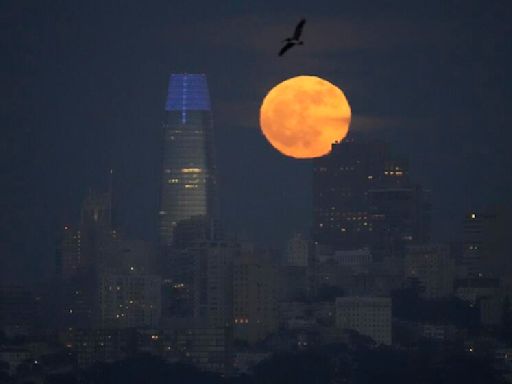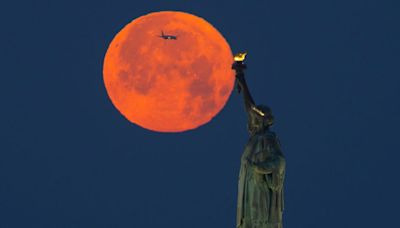Search results
The Moon is Earth 's only natural satellite. It orbits at an average distance of 384,400 km (238,900 mi), about 30 times the diameter of Earth. Over time Earth's gravity has caused tidal locking, causing the same side of the Moon to always face Earth.
The Moon makes Earth a more livable planet by moderating our home planet's wobble on its axis, leading to a relatively stable climate. It also causes tides, creating a rhythm that has guided humans for thousands of years.
Explore the moon's surface with Google Moon's interactive maps and detailed imagery.
Moon phases for 2024 or any year. New Moon and Full Moon calendar with precise times and simulation of the Moon phase today. When is the next Full Moon?
The Moon phase calculator shows exact times of the various moon phases for Singapore, Singapore in year 2024 or in other locations and years.
Jul 26, 2018 · What is the moon made of, and how did it form? Learn about the moon's violent origins, how its phases shaped the earliest calendars, and how humans first exp...
5 days ago · Moon, Earth’s sole natural satellite and nearest celestial body. Known since prehistoric times, it is the brightest object in the sky after the Sun. Its name in English, like that of Earth, is of Germanic and Old English derivation.
As the Moon orbits Earth, different parts are in sunlight or darkness at different times. The changing illumination is why, from our perspective, the Moon goes through phases. During a "full moon," the hemisphere of the Moon we can see from Earth is fully illuminated by the Sun.
The Moon was likely formed after a Mars-sized body collided with Earth several billion years ago. Earth's Moon is the only place beyond Earth where humans have set foot, so far. Earth's only natural satellite is simply called "the Moon" because people didn't know other moons existed until Galileo Galilei discovered four moons orbiting Jupiter ...
Your distant view gives you a unique perspective on the Moon that can be hard to visualize from the ground, where the Moon appears to sweep through the sky as an ever-changing globe of light. From your astronaut’s viewpoint, you can see that the Moon is an average of 238,855 miles (384,399 km) from Earth, or about the space that could be ...






